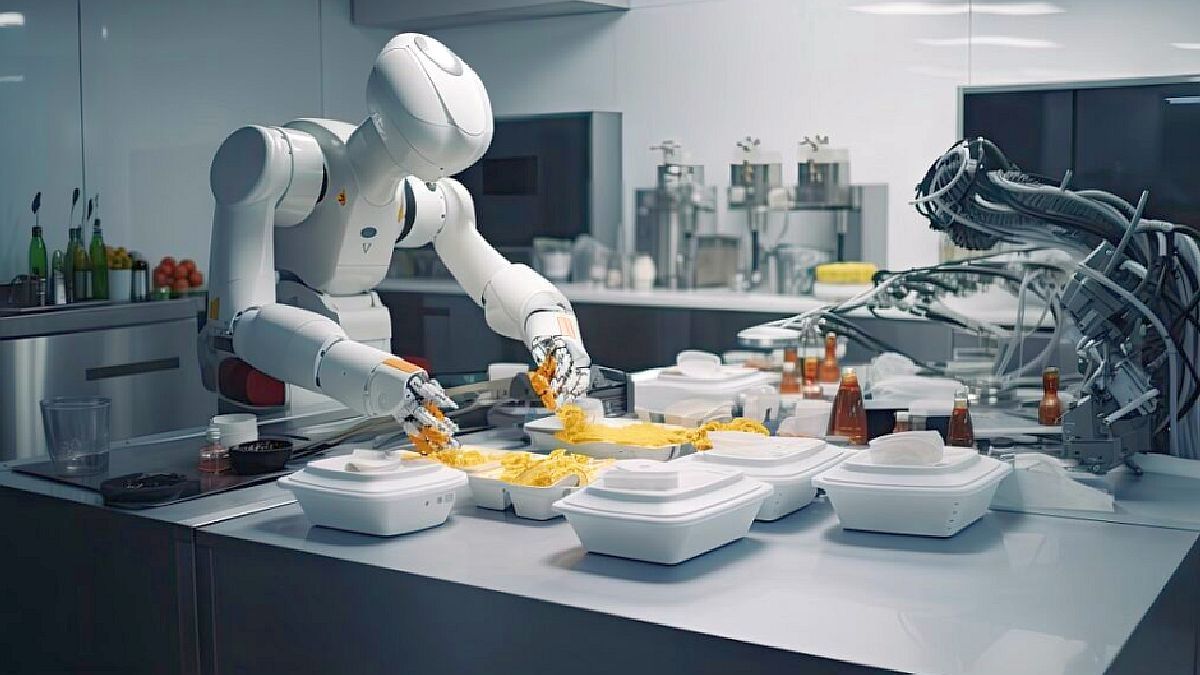The fusion between technology and feeding has given rise to an exciting scenario where culinary innovation meets science and Artificial Intelligence (AI). However, this flavor crossroads also raises ethical questions and challenges that must be addressed.
Technology has played an essential role in the creation of food Innovators that go beyond traditional recipes. The food engineering, biotechnology and AI They have come together to revolutionize the food industry in several aspects.
Growing concern for the environment has led to the development of more sustainable foods. Technology has enabled the creation of plant-based alternatives that mimic the taste and texture of meat, thereby reducing the environmental footprint of food production.
Through the development of genetically modified crops, it is possible to increase the density of vitamins and minerals in crops. Additionally, foods fortified with functional ingredients are being created to promote health. In the cereal sector, influential players like Kellogg Company have launched vitamin-enriched Corn Flakes. An exemplary case is golden rice, a variety genetically modified to contain beta-carotene, precursors of vitamin A. This innovation seeks resolve vitamin A deficiency in regions where rice is essential, avoiding health problems. This initiative is based on biotechnology to enhance the nutritional value of rice and address vitamin A deficiency.
Likewise, various brands in the food and beverage industry apply biotechnology to enrich their products with beneficial ingredients. For example, some milks and vegetable drinks are fortified with calcium and vitamin D to improve their nutritional properties. Foods higher in protein, fiber, antioxidants and other healthy nutrients are also among the enriching creations. In a more recent approach, companies like Impossible Foods and Beyond Meat are leading the way in creating plant-based alternatives that mimic the texture and flavor of real meat. Although not based on genetic modification, these products are often fortified with vitamins and minerals, providing a nutritious alternative to traditional meat.
Technology is allowing the creation of personalized foods according to the individual needs of each person. Through data analysis and AI algorithms, ingredient combinations can be created adapted to consumers’ preferences and health goals. Such is the case of Suggestic, a platform that uses data analysis and AI algorithms to provide personalized diet and nutrition recommendations. By evaluating users’ health data and food preferences, the application creates meal plans tailored to their requirements, including allergies, health goals and dietary preferences.
At the same time, we observe the proliferation of platforms (DNAfit, 23 & Me, Pure Essentials, Self and GenoPalate) that use data analytics and biometric testing to assess clients’ health and well-being. DNAfit, For example, it offers DNA tests that provide information about how an individual’s genetic profile may influence their responses to diet and exercise. Using this data, they provide personalized recommendations for diet and exercise, optimizing each person’s health and performance.
Technology is taking culinary creativity to new levels. 3D food printing, for example, opens up possibilities for creating unique shapes and textures that challenge the limits of traditional cooking. The ChefJet Pro 3D printer empowers chefs and pastry chefs to bring sugar and chocolate decorations to life with precision. amazing. This technology introduces an unmatched level of detail to culinary creations. Similarly, Foodini, Natural Machines’ 3D food printer, renders fresh ingredients into multi-layered compositions. Another revealing example is Barilla’s Blurhapsody, which has presented a pasta 3D printer. This innovation allows chefs to customize the shapes and textures of pasta, unleashing creativity and enabling the creation of unique and captivating dishes.
Despite exciting advances in the development of new foods, Not everything is rosy.
The use of the biotechnology and food engineering To create new varieties of crops and foods must be rigorously evaluated in terms of food safety. It is essential to ensure that these foods are safe for human consumption and do not pose unknown long-term risks.
The food introduction Highly processed or synthetic foods can have an impact on food culture and the relationship we have with food. It is important to maintain a balance between innovation and the preservation of culinary traditions and healthy eating habits.
Technology applied to the development of new foods can increase the gap between those who have access to these innovations and those who do not. It is vital to ensure that these beneficial technologies are accessible and affordable for all.
It is crucial to ensure that technology is used for the common well-being, promoting safe, sustainable and accessible food for all, while preserving our culinary traditions and our emotional connection to food.
Ultimately, developing new foods through technology is an exciting journey that requires a balanced approach to maximize its potential and address the challenges it poses. Always remembering that, beyond technology, food is an essential part of our identity and well-being, and deserves to be treated with respect and care in this exciting search for perfect flavor and nutrition.
Source: Ambito
David William is a talented author who has made a name for himself in the world of writing. He is a professional author who writes on a wide range of topics, from general interest to opinion news. David is currently working as a writer at 24 hours worlds where he brings his unique perspective and in-depth research to his articles, making them both informative and engaging.




